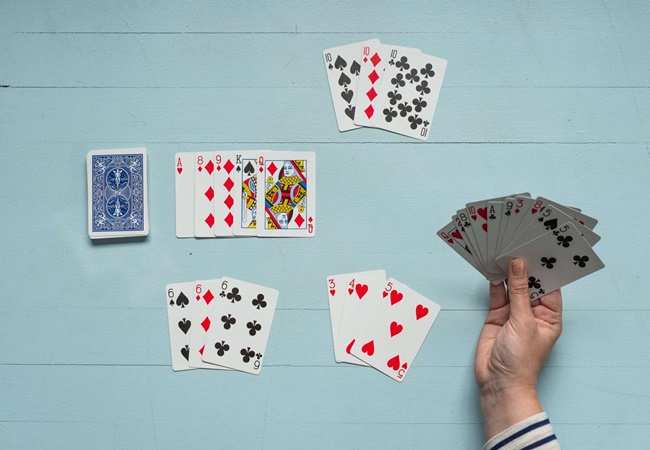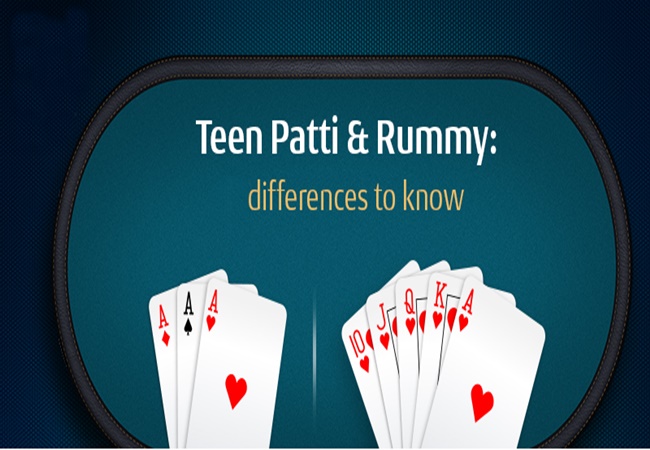Basic Rules and Variations in Teen Patti and Rummy
Card games have long been a source of entertainment, strategy, and social interaction in many cultures, with their rules and variations evolving over time. Two of the most popular card games in South Asia are Teen Patti and Rummy. Both games have deep cultural roots and are enjoyed in various forms, whether played casually among friends or competitively in organized settings. Despite their shared regional popularity, Teen Patti and Rummy games are distinct in terms of rules, gameplay, and variations. This article delves into the basic rules and common variations of both games, highlighting what makes them so enduring and beloved.

Teen Patti: Basic Rules
Teen Patti, often referred to as “Indian Poker,” is a game that combines chance and skill, much like poker. Played with a standard 52-card deck, the objective of Teen Patti Stars is to have the best three-card hand or to bluff your way into winning the pot. The game is typically played between 3 to 6 players, and the ranking of the cards is similar to poker, with Aces being high.
Gameplay
- Ante: Before the game starts, all players contribute to the pot with a mandatory bet called the ante. This ensures there is a sum of money or chips at stake from the beginning.
- Dealing: Each player is dealt three cards face down. Players can choose to play either “blind” (without looking at their cards) or “seen” (after viewing their cards). Betting starts after the cards are dealt.
- Betting: The game proceeds clockwise, and each player has the option to either bet or fold. The rules and variations dictate that players who are playing blind must bet at least the current stake, while those who have seen their cards need to bet at least twice the current stake.
- Showdown: If there are only two players left after a series of bets, either player can demand a showdown, where both reveal their cards. The player with the better hand wins the pot. The ranking of hands from highest to lowest is as follows:
- Trail (Three of a Kind): Three cards of the same rank (e.g., three Aces).
- Pure Sequence (Straight Flush): Three consecutive cards of the same suit.
- Sequence (Straight): Three consecutive cards not necessarily of the same suit.
- Color (Flush): Three cards of the same suit.
- Pair: Two cards of the same rank.
- High Card: If no player has any of the above, the hand with the highest card wins.
Common Variations of Teen Patti
Teen Patti has numerous rules and variations that add different twists to the basic gameplay. Some popular variations include:
- Joker Teen Patti: In this variation, one or more joker cards are introduced to the game. These jokers can substitute for any card to complete a hand, increasing the chances of forming stronger hands.
- Muflis (Lowball Teen Patti): In Muflis, the ranking of hands is reversed. The lowest hand wins the pot. For example, the least valuable combination (a low card sequence) becomes the most valuable hand in the game.
- AK47: In this variant, Aces, Kings, 4s, and 7s are treated as jokers, meaning they can be used as any card in a hand, increasing the potential for stronger combinations.
- Bust Card Draw: This variation introduces a ‘bust card,’ as outlined in the rules and variations. If any player’s hand contains this particular card, their hand is considered void, and they automatically lose the round.
- Discard One: In this variation, players are dealt four cards instead of three, but they must discard one before placing their bets.
Rummy: Basic Rules
Rummy is another classic card game that emphasizes skill and strategy, with various rules and variations. The objective of Rummy is to form valid sets and sequences from the cards in hand. Rummy can be played with 2 to 6 players and is typically played with two standard 52-card decks and a joker deck, especially in Indian Rummy. Many players enjoy the game through the best rummy apps available.
Gameplay
- Dealing: Each player is dealt 13 cards. The remaining cards form the draw pile, and the top card is placed face up to create the discard pile. A joker card is selected randomly from the deck.
- Drawing and Discarding: On their turn, players can either pick a card from the draw pile or take the top card from the discard pile, following the game’s rules and variations. After drawing a card, players must discard one card to maintain a hand of 13 cards.
- Objective: The goal is to form sets and sequences with the cards in hand. A sequence is a group of three or more consecutive cards of the same suit, while a set is a group of three or four cards of the same rank. To declare, players must have at least two sequences, one of which must be a pure sequence (a sequence without any jokers).
- Joker Use: Jokers (wild cards) can be used to complete sets or sequences but cannot be used in a pure sequence.
- Declaring: Once a player has formed all their cards into valid sets and sequences, they can declare their hand. The other players must then reveal their hands and, based on the game’s rules and variations, tally up their penalty points according to the unmatched cards left in their hands.

Common Variations of Rummy
Rummy has many regional and international variations, making it a game with variants for all ages, some of which are:
- Indian Rummy: This version is typically played with two decks of cards, including jokers. It follows the standard rules and variations but emphasizes the requirement of at least one pure sequence for a valid declaration. Indian Rummy is popular in both physical and online formats.
- Gin Rummy: In this version, the objective is to create sets and sequences with fewer cards—only 10 cards are dealt to each player. Additionally, players can knock when they have 10 or fewer points of unmatched cards, ending the round.
- Contract Rummy: This is a progressive form of Rummy where the number and type of sets and sequences required to win increases with each round. Players must fulfill a specific contract for each deal, such as forming two sets in the first round or two sequences and a set in the second.
- Kalooki Rummy: A variation that involves using two decks and jokers, with the objective of reaching a set point total (usually 150 or 200) before your opponents. Players can form sets of up to four cards and sequences of three or more cards, depending on the game’s rules and variations.
- 500 Rummy: In this version, players earn points based on the cards they lay down. The first player to reach 500 points wins the game. The scoring system adds a competitive layer to the gameplay, rewarding players for each card combination they form during their turn.
- Points Rummy: In this fast-paced version of Rummy, the game is played for points with a pre-decided value. The player who finishes first collects the cash based on the opponent’s points and the value assigned to each point.
Key Differences Between Teen Patti and Rummy
While Teen Patti and Rummy are both popular card games in South Asia, their rules and variations cater to different tastes in terms of strategy and gameplay:
- Card Distribution: In Teen Patti, players receive only three cards, while in Rummy, each player is dealt 13 cards, highlighting the distinct rules and variations of each game.
- Objective: The objective in Teen Patti is to have the best hand or bluff opponents into folding, whereas in Rummy, the goal is to arrange all cards into valid sets and sequences.
- Bluffing vs. Strategy: Teen Patti involves a significant element of bluffing, where players may bet on weak hands to intimidate others, reflecting the game’s rules and variations. Rummy is more about calculating probabilities, arranging cards, and minimizing penalty points.
Conclusion: Basic Rules and Variations
Teen Patti and Rummy offer distinct gaming experiences that have captivated players for generations. Teen Patti is a game of excitement, bluffing, and bold betting, while Rummy requires sharp thinking, patience, and a strategic approach to organizing cards into sets and sequences. Both games have their respective charm, and their rules and variations, along with various regional and creative adaptations, ensure that they remain fresh and engaging for both new and seasoned players alike. Whether you prefer the thrill of Teen Patti or the methodical gameplay of Rummy, these card games are a great way to enjoy quality time with friends and family.








